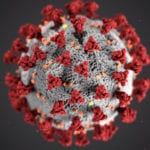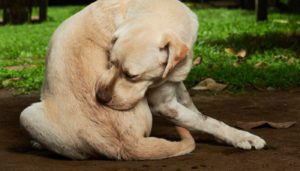It is estimated that over half of cats and dogs are overweight or obese, and here at our veterinary centre, obesity is a huge issue for our clients. Being overweight can lead to huge reduction in quality of life for pets, not only in day to day life, but it can lead to a host of other conditions, such as arthritis and diabetes. These problems can be very expensive to treat, as well as debilitating for the animal, and a reduction in weight can vastly improve or even eliminate some of these issues.
Is my pet overweight?
A huge part of the problem is that many pet owners are unaware of how heavy their pets should be, or how they should look. Many sighthounds in good health can look emaciated to the untrained eye, and for many “working” breeds, such as the Labrador, overweight animals seems to have become the norm.
Along with a standard weight range for different breeds, our vets use a scale known as the body condition score, to assess an animals weight. When viewed from above, the animal should have a noticeable waist, and from the side, there should be a visible tuck up at the stomach. You should also be able to feel your pets ribs fairly easily, with a minimal covering of fat.
Looking closer at your pets diet
Many owners today are unaware of just how much food their pets should be eating on a day to day basis. You should always check the packaging of food for the manufacturers feeding guidelines, however be aware that it is just that – a guide. Amounts of food should be given based on your pets ideal weight, not their current weight and can be adjusted as needed – if you adjust feeding amounts and your pet is losing or gaining weight quicker than a vet has advised, readjust your amounts to compensate slightly for this. We would always recommend that you use a set of kitchen scales or a measuring cup that is designed for the food you are feeding. Too many people are confident in “eyeballing” the amount but are really feeding far too much.
As well as the amount, it’s also worth looking at the food itself that you are feeding. Many of the cheaper (and some of the expensive) brands of food are full of cereals and grains, before any meat, as well as being packed with colours and preservatives. As well as not being good for their waistline, certain additives in food can negatively affect behaviour – think of the way sweets packed with sugar and e-numbers would affect a child! A good dog food should have meat as the first ingredient listed, and as few additives as possible. At certain stages of your pets life, a change in food may be appropriate. Specific kitten and puppy foods are formulated with extra calories to help them grow, senior foods often have fewer calories to compensate for reduced activity and maybe some extras to help with stiff joints! There is no one size fits all in terms of food – a working dog food is designed to keep a working gundog going all day, but the calories and fat might be much more than your chilled out pooch requires!
Avoiding those begging eyes
If your pet has been used to a certain amount of food, it can be a struggle to get them to adjust to something new. Always reduce or change brands of food gradually – their digestive systems need time to adjust to different foods, as well as trying to avoid rumbly bellies! Keep in mind there are loads of ways to make the transition easier on them and you.
Try to think of any healthy swaps that can be made. If your dog is used to getting a big fatty chew stick to keep it busy, see if they’re interested in raw veggies, like carrot or turnip. Many pets will be just as happy having something to chew on, and most will love the taste too. You can even freeze some natural yoghurt or wet food in a Kong toy for them.
If it’s only their food that they’re willing to eat, get creative in using it. If they gulp their food, you could invest in a slow feeder bowl or a puzzle feeder, or if you’re on a budget, scattering dry food around the garden is a great way to get some extra mental and physical exercise, as well as making their food last much longer.
Get your running shoes on!
While diet is usually the key to any sort of weight loss, exercise can play a huge part, and is often easier to implement than a human exercise regime – unlike us, most pets love a bit of extra exercise! It’s important that any sort of increased exercise is done gradually, and particularly in obese or elderly pets, you should consult a vet before starting. Sometimes vigorous exercise can do more harm than good!
Most dogs will jump at the chance for an extra walk or game of fetch, or even just playing with a toy at home can get their heart rates going. If your dog begins to look tired, cut the walk a little shorter next time – we’re not trying to walk their hind legs off!
Cats can be more difficult to manage, especially if they’re outdoor. While they might be getting plenty of exercise while they’re out, they could be eating all sorts of things that they find or could even be getting full meals at someone else’s door! Consider putting a tag on your cats collar that says “Please do not feed me”, since many people will not have considered that they could be doing your cat any harm.
For indoor cats, regulating their food intake can be much easier, but you might have to convince them to exercise a bit more. While it is getting increasingly more common to pop a lead and harness on your cat and take him for a walk, this can also be extremely stressful for a cat who has never been outside. Encourage your cat to play with you by using chase and tug toys, or even a tall cat climbing tower can get them moving a bit more.
We are here whenever you need us
Although we’ve tried to get you started here, if you need any more advice or have any concerns about your pets weight, give us a call! A weight check up with our nurse is free and if you want a more thorough check up before starting any weight loss plans with your pet, please see one of our vets.
Remember – any behavioural or sudden weight change in your pet usually warrants at least a call to us, and preferably a check up with the vet.
Good luck with your pets weight loss journey, they will thank you for it in the end.






